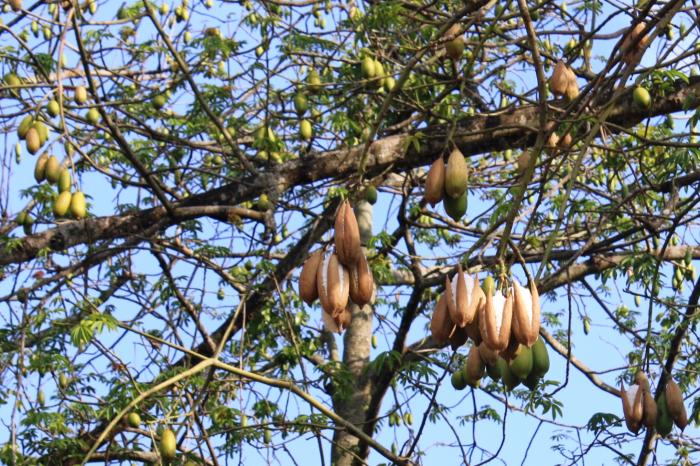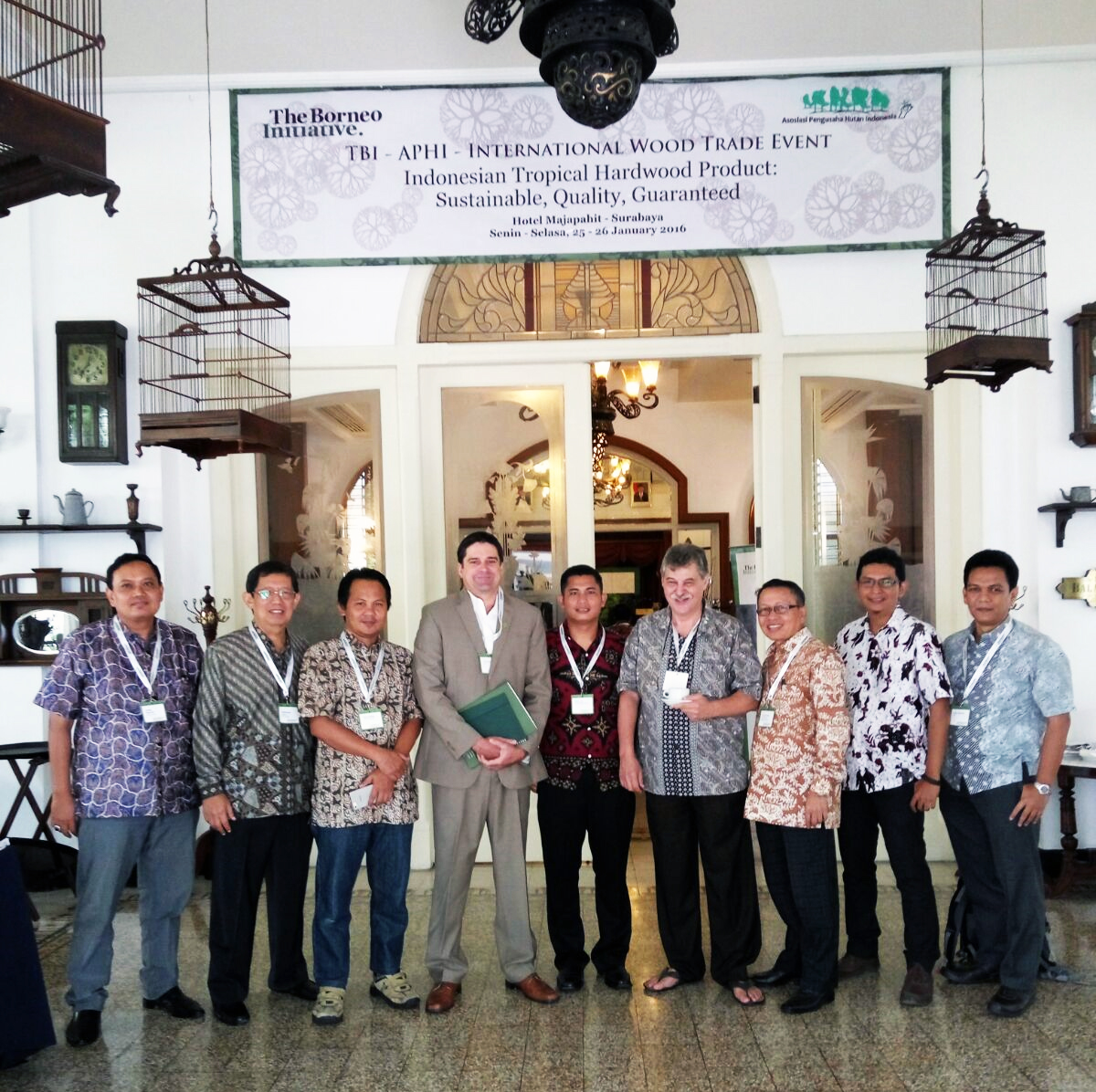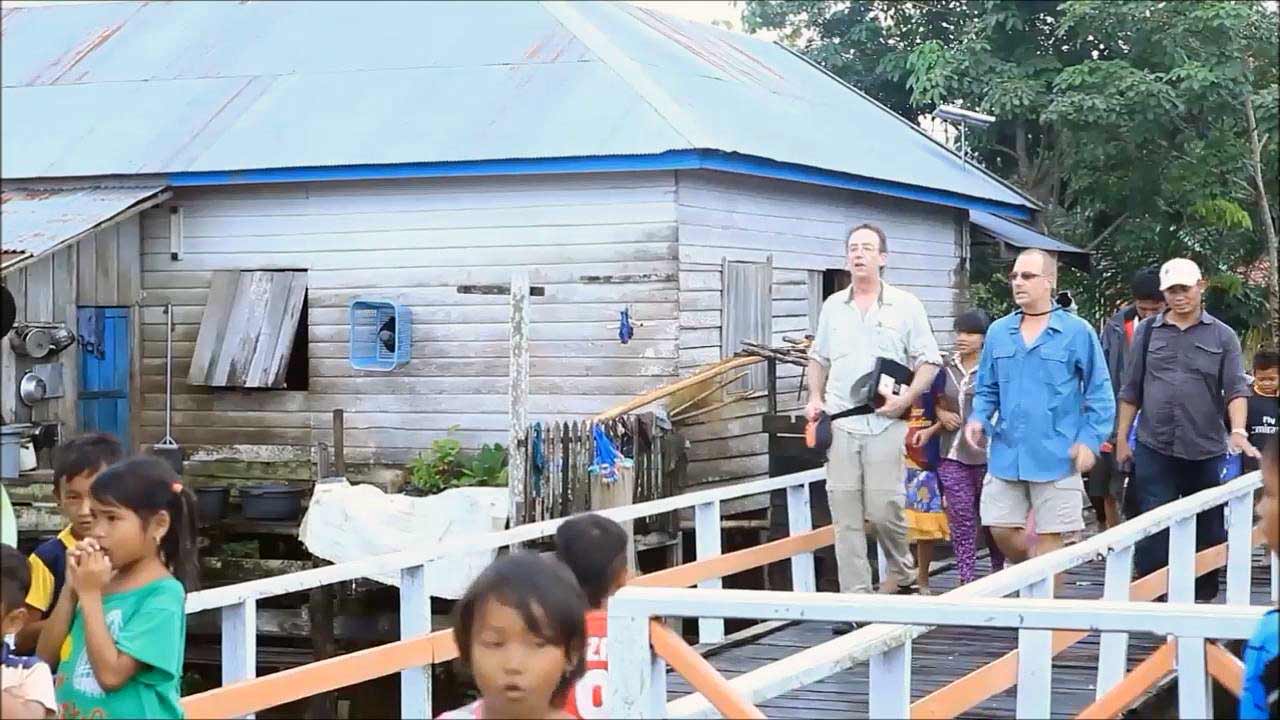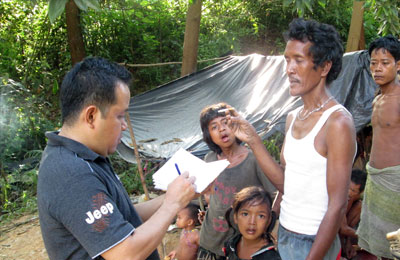
MANGROVE FOREST EXSISTENCE

Mangrove forest is a forest ecosystem consisting of a group of trees that can live in a high salinity environment. One of the characteristics of mangrove plants has roots that poke to the surface. The appearance of mangroves looks like a bushland that separates land and sea. The word mangrove comes from the word mangue (Portuguese) which means plant, with grove (English) meaning shrub.
Mangrove forests are a group of woody plant species that grow along tropical and subtropical shorelines that are protected and have a kind of landform with anaerobic soil type or soil with limited oxygen content.
Mangrove forests have unique characteristics that are not shared by other forests, including:
• Not affected by climate
• Forests do not have a canopy structure
• Soil inundated by sea water
• Lowland land
• The tree species usually consist of fires (Avicenia sp.), Pedada (Sonneratia sp.), Mangroves (Rhizophora sp.), Lacing (Bruguiera sp.), Nyirih (Xylocarpus sp.) Nipah (Nypa sp.).
Functions and Benefits of Mangrove Forest
The benefits and functions of Mangrove Forest from various perspectives, such as ecological benefits, economic benefits, physical benefits, biological benefits, and chemical benefits, as well as social benefits are felt by coastal communities. Studies have been done and proved that mangrove forests become an important role in coastal life. The benefits and functions of mangrove forests can be summarized as follows:
1. Habitat of rare animals
Mangrove forests are often become habitat for wildlife species. More than 100 species of birds live in this mangrove forest ecosystem, and the vast muddy land bordered by mangrove forests is home to thousands of beach birds, including the Asian rare species of Blekok (Limnodrumus semupalmatus). In addition, many other animals are usually found in mangrove forests such as long-tailed monkeys, white monkeys, and sea water creatures such as shrimp, crabs, mollusks, including reptiles such as crocodilus crocodilus (Largarto cuajipal). There are also other breastfeeding animals including Royal Bengal Tiger (Panthera tigris), Leopard (Panthera pardus) and spotted Grave (Axis axis), wild pigs (Sus scrofa) and Kancil (Tragulus sp.), Beaver (Aonyx cinera and Lutra sp.) are common in mangrove forests but rarely seen. While dolphins such as Gangetic dolphins (Platanista gangetica) and ordinary dolphins (Delphinus delphis) are also commonly found in mangrove forest rivers such as Manatees (Trichechus senegalensis and Trichechus manatus latirostris) and Dugong (Dugong dugon) although these species are rare and in some places are threatened with extinction.
2. Protection against natural disasters
Mangrove forests can prevent natural disasters, as one of the main functions of mangrove forests is to protect coastlines from abrasion and to absorb large waves, including large-scale natural disasters such as tsunamis. In addition, vegetation in mangrove forests can protect wetland crops and dry land or other natural vegetation from damage caused by storms or winds that are salted through filtration process.
3. Precipitation of sludge and nutrient addition
The physical properties of plants found in mangrove forests assist in the process of deposition of mud where it is closely related to the removal of toxins and nutrients that are often attached to the mud particles themselves. With mangrove forests, water quality is maintained from mud deposits due to soil erosion and coastal abrasion.
4. Nutrient addition
The physical properties of mangrove forests are one of the tendency to slow down the flow of water types due to the density of each tree and its roots, thus causing a lot of mud to settle. The precipitation of this mud is worth for mangrove forests because many mud carried from the rice fields so much that the mud contains nutrients that can be utilized by all plant species in the mangrove forest.
5. Toxin retardant
Many toxins entering the aquatic ecosystem in bound to the mud surface or exist between the lattice of water particle molecules. These toxins may be transported from the land area through waters such as from waste and will end up into ocean. Some plant species in Mangrove Forest can assist in the process of inhibition of toxins carried from this region actively.
6. Germplasm source
Germplasm which is one of the valuable natural treasures of life is very useful both for the improvement of the types of commercial animals and for maintaining wildlife populations themselves in the future as advocates of technological advances in science and to support the development of a region.
7. Recreation and Tourism
Mangrove forests have an aesthetic value, both in natural and life factors. Mangrove forest provides a different tourist attraction. Characteristics of forests that are in transition between land and sea are considered the tourist as a unique thing that becomes one of the benefits of mangrove forest.
Tourism activities in the mangrove forest area besides able to grow the economy of the surrounding community by providing jobs and business opportunities around the area of ​​forest ecosystems and coastal ecosystems, also able to maintain the balance of the environment and forest ecosystems, especially mangrove forests.
8. Education and research facilities
Mangrove forests are utilized in the development of science and technology. As a country with the largest mangrove forest area in the world, Indonesia would need a good field laboratory for research and education activities; therefore mangrove forest is used as one of the means for educational activities related to ecology.
9. Carbon Absorbers
According to the research, one hectare of mangrove forest can absorb 110kg of carbon and a third is released in the form of organic deposits in the mud. The process of photosynthesis that converts inorganic carbon in the form of dioxide to form organic carbon in the form of vegetation material. In most forest ecosystems, this material decomposes and releases carbon back into the atmosphere as carbon dioxide (CO2). However, mangrove forests contain a large amount of organic matter that does not rot. Therefore, mangrove forest is more functioning as carbon absorber than as a source of carbon release because plants in mangrove forest have many leaves so it is more potential to absorb carbon in large amount compared to other plants.
10. Maintain a microclimate
Evapotranspiration of mangrove forest is able to maintain the humidity and rainfall of the area, so that the climate around the area with mangrove forest will be maintained micro climate which depends on several factors such as temperature, humidity, wind and sunlight. The micro climate itself is a factor of the physical condition of the climate that affects a relatively small area, only a few dozen meters or even just a few meters. This condition is in the bowels of the earth, or under the canopy of trees. The micro climate of the mangrove forest is also affected by the wind, the topography and even the vegetation present in the mangrove forest.
11. Growing the island and stabilizing the beach
One of the roles and benefits of the mangrove forest ecosystem is the complex and dense mangrove root system, in addition to the roots of plant roots in mangrove forests to trap the remains of organic matter carried by sea water from the mainland. This process causes the sea water to be kept clean and thus preserve the life of seaweed and coral reefs. Because of this process, mangroves often grow coastline development over time. Mangrove growth extends the boundaries of coastal ecosystems and provides opportunities for terrestrial plants to live and flourish on land. The roots of the trees in the mangrove forest also maintain the coastal fringes from the dangers of soil erosion and coastal abrasion. In addition, vivipara fruit that exist in the mangrove forest is often carried coastal currents and spread into mangrove forests in new habitats. In a long period of time this new habitat can extend into its own island.
12. Protect and nourish
Mangrove forests produce nutrients that can nourish marine waters, both inorganic and organic nutrients. With an average primary production of high mangrove forests, mangrove forests can maintain the sustainability of fish, shellfish and other brackish water populations. Mangrove forests are a breeding ground for several species of animals such as shrimp, crab and brackish water fish. Thus it is a benefit of the existence of mangrove forests. It is necessary for us to continue to maintain the preservation of mangrove forests to maintain the balance of nature.
Source : Anisa Anisa /Ilmu Geografi : Manfaat Hutan Bakau
Other News
-
 APCS Social Support Action; The Beauty of Sharing
APCS Social Support Action; The Beauty of Sharing
-
 How Can We Protect This Earth
How Can We Protect This Earth
-
 A Million Tree International Day
A Million Tree International Day
-
APCS's 10th Anniversary Celebration
-
 Benefits of Wetlands for Human Life
Benefits of Wetlands for Human Life
-
 Water and Their
Water and Their
-
 Virtual Office Saving The Environment and Business Cost
Virtual Office Saving The Environment and Business Cost
-
 Plastic Pollution
Plastic Pollution
-
 INTERNATIONAL FOREST DAY: A MOMENTUM FOR FOREST FUNCTIONS
INTERNATIONAL FOREST DAY: A MOMENTUM FOR FOREST FUNCTIONS
-
 The Famous Kapok Tree from Indonesia
The Famous Kapok Tree from Indonesia
-
 YONGKI IKHTIYANTO AS MANAGING DIRECTOR APCS
YONGKI IKHTIYANTO AS MANAGING DIRECTOR APCS
-
 PT. PANDU MAHA WANA (ASIA PACIFIC CONSULTING SOLUTIONS) AS A NEW MEMBER OF FSC®
PT. PANDU MAHA WANA (ASIA PACIFIC CONSULTING SOLUTIONS) AS A NEW MEMBER OF FSC®
-
 Welcoming FSC® Asia Pacific Policy Manager To Be Located In Indonesia
Welcoming FSC® Asia Pacific Policy Manager To Be Located In Indonesia
-
 Regional Consultation for Asia-Pacific: Guidelines for the Sustainable Management of Production Forests in Tropical Countries through Forest Concessions in the Context of Agenda 2030
Regional Consultation for Asia-Pacific: Guidelines for the Sustainable Management of Production Forests in Tropical Countries through Forest Concessions in the Context of Agenda 2030
-
 FRESH AIR BECOME MORE “EXPENSIVE†BECAUSE OF CARBON, WHY?
FRESH AIR BECOME MORE “EXPENSIVE†BECAUSE OF CARBON, WHY?
-
 Premier Asian Event for Pulp, Paper, Board, Packaging, Print and Corrugated Industries 2016
Premier Asian Event for Pulp, Paper, Board, Packaging, Print and Corrugated Industries 2016
-
 Asia-Pacific Forestry Week (APFW) 2016
Asia-Pacific Forestry Week (APFW) 2016
-
 APHI- TBI International Trade Event 2016 “Indonesian Tropical Hardwood – Sustainable, Quality, Guaranteed “
APHI- TBI International Trade Event 2016 “Indonesian Tropical Hardwood – Sustainable, Quality, Guaranteed “
-
 APCS Celebrates 5 Year Anniversary!
APCS Celebrates 5 Year Anniversary!
-
 Fight Peat Fire With Peat FireX
Fight Peat Fire With Peat FireX
-
 FSC certification yields financial benefits for tropical forest businesses, shows new WWF report
FSC certification yields financial benefits for tropical forest businesses, shows new WWF report
-
 Peat Destruction, Soil Subsidence and Flooding in South East Asia
Peat Destruction, Soil Subsidence and Flooding in South East Asia
-
 APCS experienced the adventure!
APCS experienced the adventure!
-
 Rimba Raya Conservation Audit 2015
Rimba Raya Conservation Audit 2015
-
 Recent News - January 2015
Recent News - January 2015
-
 APCS's High Conservation Value Identification for APP: World's Largest and Most Complex Assessment
APCS's High Conservation Value Identification for APP: World's Largest and Most Complex Assessment